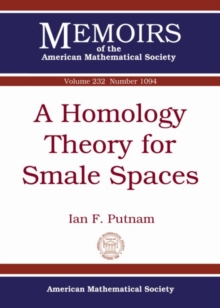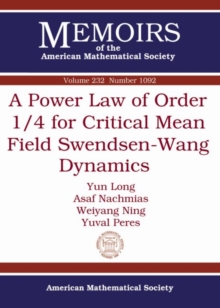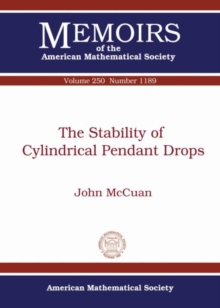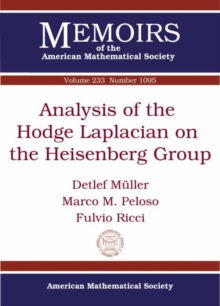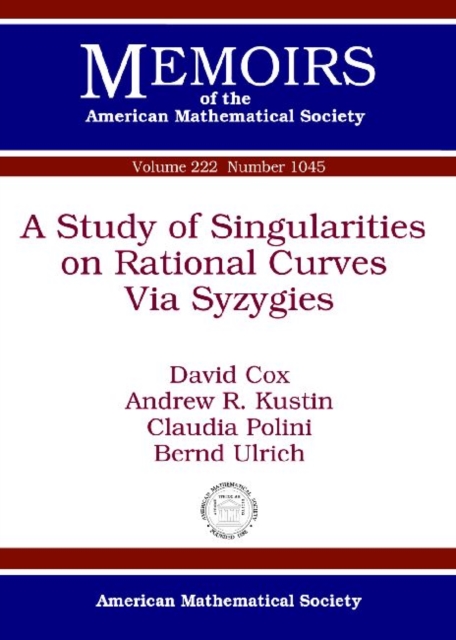
A Study of Singularities on Rational Curves Via Syzygies Paperback / softback
by David Cox, Andrew R. Kustin, Claudia Polini, Bernd Ulrich
Part of the Memoirs of the American Mathematical Society series
Paperback / softback
- Information
Description
Consider a rational projective curve C of degree d over an algebraically closed field kk.
There are n homogeneous forms g1,…,gn of degree d in B=kk[x,y] which parameterise C in a birational, base point free, manner.
The authors study the singularities of C by studying a Hilbert-Burch matrix φ for the row vector [g1,…,gn].
In the ""General Lemma"" the authors use the generalised row ideals of φ to identify the singular points on C, their multiplicities, the number of branches at each singular point, and the multiplicity of each branch. Let p be a singular point on the parameterised planar curve C which corresponds to a generalised zero of φ.
In the ""Triple Lemma"" the authors give a matrix φ′ whose maximal minors parameterise the closure, in P2, of the blow-up at p of C in a neighbourhood of p.
The authors apply the General Lemma to φ′ in order to learn about the singularities of C in the first neighbourhood of p.
If C has even degree d=2c and the multiplicity of C at p is equal to c, then he applies the Triple Lemma again to learn about the singularities of C in the second neighbourhood of p.
Consider rational plane curves C of even degree d=2c.
The authors classify curves according to the configuration of multiplicity c singularities on or infinitely near C.
There are 7 possible configurations of such singularities.
They classify the Hilbert-Burch matrix which corresponds to each configuration.
The study of multiplicity c singularities on, or infinitely near, a fixed rational plane curve C of degree 2c is equivalent to the study of the scheme of generalised zeros of the fixed balanced Hilbert-Burch matrix φ for a parameterisation of C
Information
-
Out of Stock - We are unable to provide an estimated availability date for this product
- Format:Paperback / softback
- Pages:116 pages
- Publisher:American Mathematical Society
- Publication Date:30/03/2013
- Category:
- ISBN:9780821887431
Information
-
Out of Stock - We are unable to provide an estimated availability date for this product
- Format:Paperback / softback
- Pages:116 pages
- Publisher:American Mathematical Society
- Publication Date:30/03/2013
- Category:
- ISBN:9780821887431
